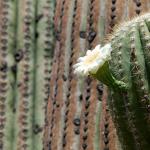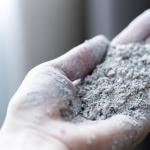Aphids are one of the main cucumber pests, getting rid of which often results in a lot of hassle and loss of time.
Therefore, it is very important to be able to choose effective and at the same time safe means to solve this problem, both supplied by modern science and from the sphere of folk wisdom.
To reduce the risk of damage to cucumber plantings by this pest, it is reasonable to combine the necessary basic plant care, preventive measures and active resistance to aphids.
Preparations for treating cucumber plantings against aphids

Common garden ants are carriers of aphids, so you need to get rid of them first, and then tackle the aphids.
And, when you start choosing a remedy among special drugs, you should immediately take into account that they are divided into 2 groups - biological and chemical.
Chemical preparations for aphids
Preparations for melons and melons Intavir and Acrofit combine effectiveness with a high degree of safety - you don’t have to worry not only about human health, but also about your pets, the condition of the soil growing near the plant, and even about beneficial pollinating insects.
But it is also necessary to take into account that although these drugs do not tend to accumulate in plant fruits, if treatment with Acrofit is scheduled for the cucumber ripening season, at least 2 days must pass between it and harvesting.


Since the effect of Acrophyte occurs within 8-10 hours, the morning of a sunny day, not overshadowed by precipitation, is suitable for treatment. For effectiveness, the treatment is carried out twice - again after 10 days. To perform the treatment, you will need a sprayer and, of course, strict adherence to the instructions.
Against black aphids on cucumbers, you can only get by with Intavir, for which the leaves of the crop are evenly sprinkled on both sides with a solution of the drug in the proportions of 1 tablet per 10 liters of water. Begin processing on a sunny morning.
And it is important to have time to treat cucumbers infected with aphids literally a day in advance - the remaining solution cannot be stored.
If repeated treatments are necessary (no more than 3 per season), they should be separated by an interval of at least 2 weeks.
Biological preparations for aphids
An advantage of the drugs Strela and Fitoverm, which are effective for preventive treatment against pest infestation, is their biological origin, thanks to which they can be used even 24 hours before harvesting the cucumber crop.

Processing with them (prepared in accordance with the instructions) is carried out in good, cloudless weather.
During the growing season of plants, it is recommended to schedule 2-3 treatment sessions, separated by an interval of 3 weeks.
Folk remedies for fighting aphids on cucumbers
The most common ingredients in folk recipes against aphids are considered to be plants with a pronounced aroma, and also, relatively recently (about a hundred years ago), vinegar and soap solution began to appear in them.
Typically, all these drugs are used 2-3 times per season, maintaining an interval of 10-15 days between them.

Ash solution with laundry soap
This preparation for treating cucumber leaves (and you must not skip their lower part) is prepared from a bar of grated laundry soap and 2 tablespoons of wood ash completely dissolved in 1 bucket of water.

Vinegar solution
Once every 21 days throughout the growing season, cucumber plantings can be effectively treated by pollinating with a spray bottle with a solution of 1 tablespoon of 9% vinegar per 1 liter of water.
Infusions of aromatic plants
The popularity of herbal remedies against aphids is explained not only by their effectiveness, but also, above all, by their complete safety for humans and the ecosystem of the site.
When planning processing, it is worth considering that for 10 sq. m of planting, on average 1 liter of prepared liquid is consumed.
For example, from 300 g of sun-dried celandine leaves, infused for 48 hours in a bucket of water, a remedy for ants and various sucking insects is obtained.

Hot pepper will help get rid of aphids and mites - just pour 50 g of chopped vegetable with 1 liter of boiling water, leave for 2 hours and, after straining, dilute with 9 liters of water.
If you need treatment against aphids, caterpillars and slugs, you should take on garlic.
To prepare the solution, 500 g of garlic is crushed and, poured with 3 liters of water, left for 5 days in a warm place, then filtered and diluted with another 7 liters of water.
Rules for protecting greenhouse cucumbers from aphids
In general terms, treatment of plantings against aphids in greenhouses is almost the same as treatment in open areas. But it is necessary to take into account the somewhat closed nature of the greenhouse atmosphere - care should be taken to protect the skin and respiratory organs from the effects of chemicals and, after using them, be sure to tightly close the windows and doors of the greenhouse - in order to avoid harmful contact with the treated environment of farm animals and pets.
Also, if cucumber plantings in a greenhouse are affected by aphids, the following measures must be taken in the fall:
- Remove plant debris.
- Replace the surface layer of soil.
- Treat (wash) the greenhouse from the internal surfaces with a solution of copper sulfate and then use a sulfur bomb.
Preventive measures to protect plantings from aphids
Often, the scale of damage to garden plots by aphids can be significantly reduced, or even completely prevented from destroying the crop by pests, if we do not forget about preventive work in this regard, we can recommend:

- To lure birds to the site, which requires feeders and drinkers, as well as, if possible (and taking into account the species characteristics of birds), planting certain plants that serve as food and/or shelter for them, a nesting place.
- Mix plantings of cucumbers with plantings of leaf mustard and dill - these two plants attract ladybugs well - one of the main natural enemies of aphids, capable of destroying (eating) them in huge quantities.
- Eliminate garden ants.
- Clear weeds from plantings and surrounding areas in a timely manner.
- Adhere to the rules of agricultural technology (techniques for cultivating cultivated plants), in particular, plant cucumber bushes at a sufficient distance from each other.
- Properly cultivate the soil and devote time in the fall to thoroughly removing plant debris.

Conclusion
Having the habit of combining preventive measures with a willingness to use effective means, you can protect cucumbers from aphids both in greenhouses and in open areas without loss to the harvest and your own sense of satisfaction with gardening.
If pests are detected in a timely manner, you may be able to limit yourself to folk remedies, but if aphids seriously threaten the cucumbers, you should use the chemicals mentioned above, without fear for the quality of the cucumbers - after all, these products can really be classified as environmentally friendly.
Ferry is too fat. The cheapest dishwashing liquid! BAS from liquid and phosphorus only benefit cucumber plants and do not harm us
Come to the fight... you'll learn)
Only traditional methods, no chemicals
Fighting aphids on cucumbers with folk remedies
How to save cucumbers from aphids using folk remedies
A tick is not an insect and insecticides do not affect it. In the fight against this scourge, it is necessary to use acaricides or insectoacaricides. Unfortunately, there are practically no systemic acaricides that are safe for humans. It is necessary to use enteric-contact drugs. Therefore, it is very important to carry out the treatment very carefully and in the required number of repetitions (at certain intervals in order to destroy the younger generation of pests). At a temperature of +20 °C, at least 3 treatments are required with an interval of 9-10 days. At +30 °C 3-4 treatments with an interval of 3-4 days. Otherwise, the female that emerges from the egg has time to mature (6-7 days at +30 °C) and lay new eggs. For many years, gardeners have been using folk remedies for pest control, using a number of plants that have insecticidal properties that repel or destroy insect pests. You can plant cultivated plants with flowering plants or treat your plantings with decoctions and infusions from dried raw materials. These insecticidal plants contain alkaloids and other substances that are poisonous to insects. Plant poisons, compared to chemical means of protection, are safer for humans and the environment. However, we must remember that even in small doses they are not harmless to humans, therefore, when using them, one must adhere to the recommended dosage, and in no case exceed it. In this case, the saying “The more, the better” is not relevant. Spraying and other treatments should be carried out in the evening. It is very important to remember that plant poisons are used for prophylactic purposes, and if the pest has multiplied in large numbers, then the recommended dose may not destroy them. Plant poisons are used with restrictions throughout the world. Here are the plants that are most often used by amateur gardeners in the fight against spider mites. Marigolds (tagetes) – repels aphids, fleas and spider mites. Control method - you can plant flowering plants in beds or next to pumpkin and pepper plantings, this plant will repel insects. The plant is collected and dried during flowering and stored in jars. To prepare the infusion, take half a bucket of dry crushed plants and fill them with a bucket of warm water, leave for two days. Before spraying, filter the mass and add 40g of dissolved laundry soap. Prevents the development of blackleg, disinfects gladioli corms from fungal diseases. Calendula. Planted in currant plantings, near beds with peppers, cucumbers, eggplants, to combat aphids and mites, as well as to prevent blacklegs in asters. To prepare the infusion, take 400g of crushed inflorescences, add 2 liters of water, and leave for 5 days in a dark place. Then add water to 4 liters, filter and spray the plants. Potato. You can use fresh or dried tops against aphids and mites, as well as cabbage pests, white grass caterpillars and cutworms. To prepare the solution, use 1.2 kg of fresh or 0.6-0.8 kg of dried green tops, which are poured with 10 liters of warm water, left for 3-4 hours, then filtered and sprayed. To catch wireworm larvae, take halves of raw potatoes, place them on small twigs and bury them in the ground near the plant. After 5-6 days they dig it up, destroy the pests, replace the potatoes with new ones, and bury them again. Dandelion - used against aphids and mites. Take 400g of fresh leaves or 200g of the whole plant (with roots), crush it, pour in 10 liters of warm water (not higher than 40º), leave for 2-3 hours, filter and immediately use, spray the plants.
I don’t fight it.. it’s only on my currants.. and we don’t have enough currants.. let it go away
How to spray cucumbers against aphids using folk remedies
Onion peel. 200-400 g of onion peels are poured into 10 liters of hot water. Add 50 g of soap to 10 liters of infusion and foam well. The infusion is used against codling moths, aphids, spider mites and thrips on cucumbers. It is especially effective for combating bud mite - the spreader of the currant viral disease - terry disease. Spraying of plants should begin from the moment the flower brush extends and should be carried out in the evening or in cloudy weather every 5 days until the end of flowering. To destroy spider mites, plants are sprayed 3 times with an interval of 5 days. To combat pests, it is better to use the peels of hot onion varieties. Infuse it for one day and make the infusion on the day it is prepared. Tobacco. – To prepare a tobacco decoction, take 200 g of shag or snuff and leave it in 3 liters of water for 24 hours, then boil for 2 hours, filter and add to 10 liters. Pour 50 g of diluted laundry soap into the solution and foam. The decoction is recommended to be used immediately after preparation. Used against aphids, moths and other young caterpillars. Tobacco smoke. Collect vegetable debris in small piles, add wet straw or grass and sprinkle with tobacco dust and shag. Light these small fires early in the morning or evening. Smoke saturated with nicotine kills aphid larvae and other pests. Tobacco dust can also be used to pollinate plants against various insects.
soap solution, as far as I remember. . only laundry soap...
on currants, I stupidly wet them with my hands or used a hose under good pressure to drench the currant bush and the trees
How to spray cucumbers against aphids using folk remedies
There is only one principle - to track down their paths where their hut is, fill it with gasoline and burn it... I did it in an apartment - the effect exceeded expectations... I am sure that it will also work on the site... those who survive will leave...
Please buy some poison, it costs a penny
Apply to housing and communal services, they have an article.
How to water cucumbers against aphids - folk remedies
There is no need to even talk about any kind of prevention... no means can remove this muck when it actually appears. I just organically hate them... I sprinkle them, I spray them, I lay out traps... it’s useless. But I have a lot of stones on my site and a forest nearby... and how many ants there are in the area... you never even dreamed of... by the way, neither do the majority of people giving advice here. In general, I stopped fighting them throughout the whole area... only in the greenhouse... 2-3 times a season, laying out granules of ant poison (namely granules, not powder) on their paths and directly into the holes where they go underground... more or less helps... in any case, at least the soil is not lifted from under the roots of the plants.
pour boiling water before planting
scatter pictures of the anteater around the garden beds
How to spray cucumbers against aphids using folk remedies
The first reason is trivial - some of the lower leaves inside the bed turn yellow and die from lack of light. This is not a cause for concern at all, it is normal. As a rule, a cucumber bed is a real lush jungle; it is not surprising that light penetrates inside with difficulty and the lower old leaves do not have enough of it. In this case, just pick off the yellow leaves from time to time and enjoy the harvest. The second reason is a lack or excess of moisture. In normal summers, it is recommended to water cucumbers generously two to three times a week, and in hot summers - every day, thoroughly soaking the soil. Otherwise, the roots of the cucumbers will begin to “climb” to the surface of the earth in search of moisture and may dry out. This is a disaster for plants; both leaves and ovaries begin to turn yellow. Rainy weather is also not to the liking of cucumbers: the roots rot, rot forms on the stems, and as a result we see yellow leaves again. The third reason is fungal diseases. Most often, fusarium, pythiosis and other fungal diseases are the cause of yellow leaves on cucumbers. First, rusty spots appear on the tops, then the leaves become completely covered in spots, dry out, and fall off. Moreover, in the case of fusarium, the lashes become lethargic, like a rag, and do not respond to watering. If thirty-degree heat has given way to cold rains and lower night temperatures, hold on: fungi will not keep you waiting. The fourth reason is pests. Whiteflies or spider mites suck out all the juices from cucumber leaves, as a result the leaves turn yellow and die. In this case, the recommendations are obvious: a good pest is a dead pest. You will have to either spray the garden bed with “poison” or resort to folk remedies. The fifth reason is lack of nutrients. The most unlikely, but still common cause of yellowing cucumber leaves. If the edges of cucumber leaves turn yellow and dry out, they may be lacking potassium or magnesium. Dark green veins against a yellow background may signal a deficiency of iron or manganese. Yellowing of the upper leaves occurs due to a lack of copper. Feeding will help correct this situation. Well, the last reason for yellow leaves is old age. Over time, the cucumber leaf becomes coarser, ages, stops photosynthesis, turns yellow and dies. Most likely, by this time you have already eaten your fill of cucumbers, and the aging lashes do not bother you. But if you want a fresh cucumber straight from the garden before the fall, there are ways to “extend the life” of cucumber vines, and we will talk about them later.
It would be nice to supplement the question with the conditions of care and place of residence for cucumbers.
Folk remedies for aphids on cucumbers and tomatoes
My mole cricket gobbled up the sleekest and largest berries. Now I have flower stalks and berries in trays of marshmallows and cheese.
Just pour gasoline, diesel or kerosene around the bed - mole crickets cannot stand this smell.
fought with poison. just be sure to collect them after they crawl to the surface after being poisoned. otherwise she will lie down and crawl back to shit. flood her holes intensely
Folk remedies for aphids on cucumbers based on iodine
Land a landing party of ladybugs on them)
Take a 10 liter watering can and add 2 tbsp. l. concentrated potassium permanganate. Water with a sprayer, that is, with a nozzle. Repeat 3 – 4 times.
Having tried a lot of remedies, I settled on ammonia
Get rid of aphids on cucumbers using folk remedies
How to get rid of aphids on cucumbers using folk methods
How can you treat cucumbers against aphids using folk remedies?
Give them money, they'll leave on their own.
poison the house carefully
Traditional methods of fighting aphids on cucumbers
Wood ash. 1 kg of ash is poured into 8 liters of boiling water, covered and left for two days. Then filter, add water to 10 liters, add 40g of soap and spray against a complex of sucking pests 2-3 times a month. Pepper. Infuse 100g of red pepper in 10 liters of water for 2 hours. Strain and use against aphids and various leaf-eating caterpillars in gardens and vegetable crops. The infusion is stored for a long time. It should be used in the evening hours. I haven’t used it myself, this information is from the literature. Google “Preparation of infusions and decoctions.” You can use mustard, garlic, tomato tops, and...
Getting rid of aphids on cucumbers using folk remedies
I did this yesterday: pour boiling water over hot peppers, add liquid dishwashing liquid, a little soap and leave, strain and spray, just don’t skimp on the hot pepper!
Ladybugs go there for cucumbers and more! ! They love to eat aphids)))
Aphids HATE ASH Apple trees I ash them, I just throw them in with a scoop or sprinkle them so that they cling to the branches and leaves under the trees, I spread them, try spraying ash water and scattering the ash under the cucumbers, if possible, of course6 if possible
How to get rid of aphids on cucumber leaves using folk remedies
Two-tailed is the popular name for the common earwig. A nocturnal pest that gnaws holes in everything. He especially loves to eat dahlia flowers, young plants and much more. Correctly noted - it commits atrocities at night. Control measures include spraying with infusions of garlic or onion. You can put planks or grass - they will hide under them for the day. Collect and destroy.
Two-tailed fish are “predators”; they feed on live prey and dead organic matter. So they are helpers in the garden.
Damn, I only have three-tailed ones, I would help if there were two-tailed ones. I'm sorry I can't help.
What folk remedies are used to treat cucumbers against aphids?
Give them money, they'll leave on their own.
poison the house carefully
kill them, blow them up, annihilate them, then there won’t be such a chance
Folk remedies for black aphids on cucumbers
those bastards! Try to eat them first
Two packs of tobacco from Belomor—cigarettes like this—infuse in a bucket of water and pour over.
How to get rid of black aphids on cucumbers using folk remedies
Two-tailed is the popular name for the common earwig. A nocturnal pest that gnaws holes in everything. He especially loves to eat dahlia flowers, young plants and much more. Correctly noted - it commits atrocities at night. Control measures include spraying with infusions of garlic or onion. You can put planks or grass - they will hide under them for the day. Collect and destroy.
Two-tailed fish are “predators”; they feed on live prey and dead organic matter. So they are helpers in the garden.
Damn, I only have three-tailed ones, I would help if there were two-tailed ones. I'm sorry I can't help.
How to treat cucumbers against aphids using folk remedies
Give them money, they'll leave on their own.
poison the house carefully
kill them, blow them up, annihilate them, then there won’t be such a chance
Folk remedies against aphids on cucumbers
There are many recipes. From chemistry. Before folk recipes. Fighting garden ants is fighting aphids. But how to get rid of it when it is numerous and prolific. Simply destroying an anthill does nothing. Repeated destruction of the anthill and pollination with tobacco dust gives only a temporary effect. The number of the enemy is reduced slightly. Hard workers are rebuilding the anthill again. All the same, somewhere deep in the ground there are flying females, continuously reproducing new warriors, and working ants. These beasts are unusually prolific, and when the time comes, new flying progenitors emerge from the anthills, scatter throughout the garden, giving rise to new ant families. Fighting aphids and garden ants is difficult, especially if you do not want to use the achievements of modern chemistry. Herbal infusions only repel the pest without reducing its numbers. What are the biological methods of control? The natural enemy of aphids is the ladybug, but where can you get this beneficial insect in large quantities? Have you ever watched how a river during flood brings heaps of last year’s grass from the meadows? There are sometimes thousands of these insects in this grass. I collected them in a plastic bag and brought them to the garden. But they know no boundaries. They don't care where they work. They spread and scatter all over the area. Now about the garden ant. You can use a large forest ant against it. This hard worker, destroying a lot of harmful insects, is very aggressive. Once upon a time in childhood we played ant war. They took a reed of the marsh cattail and put it in the ant heap. Ants that clung to a hostile object were transferred to another anthill. Each ant family has its own smell. Therefore, the owners always attack and kill the strangers they bring. I used this property to fight the garden ant. The forest ant is many times larger and stronger than the garden ant. True, some gardeners even make complaints about the forest ant, saying that it, like any ant, loves sweets. He can climb on peony buds, which have sugary secretions, as well as on raspberries. Firstly, a forest ant that destroys pests can be placed in a certain place in the garden. Secondly, you can use its positive qualities without burdening yourself with the neighborhood.
This infection needs to be sprayed with poison BI-58, such a stink kills everything at once)))))
Moisten with water and sprinkle with ash. Verified.
There are many recipes for treating cucumbers against aphids. Pests settle on vegetable crops in mid-summer and can leave them without a harvest. Therefore, it is important to carry out preventive measures, and if a problem is detected, immediately begin the fight. All ingredients are tested, effective and safe.
The melon aphid on cucumbers is a common pest that attacks leaves, stems, shoots and other parts of the plant. The wingless type of adult individual is green-yellow in color, winged individuals are black or dark green in color. White, almost transparent aphids are also found on cucumbers.
Black aphids live in colonies on cucumbers. Therefore, as pests spread, black spots on the leaves and stems of plants become clearly visible.
The size of insects is very small, about 1-2 mm. They live on cucumbers at the bottom of the leaves. At temperatures above +6 degrees they begin to actively reproduce. They feed on the juice of the leaves of watermelons, pumpkins, cucumbers, and melons, significantly weakening them. The poison secreted by insects is destructive to cucumbers. In addition, aphids are carriers of various infections.
Curled leaves appear on the affected cucumbers, spots can be found on them, and the ovaries and flowers begin to fall off. Cucumber plantings look lethargic and begin to turn yellow. At this stage, you can still save the crop. There are many ways to deal with aphids on cucumbers.
How to fight aphids on cucumbers, recipes with herbal ingredients
The fight against aphids on cucumbers in a greenhouse or in an open area can be carried out using herbal infusions. If you plan to get rid of aphids using folk remedies, you need to prepare the compositions correctly, observing all the recommended proportions. This will avoid burns and deterioration of the plants.

- You can remove pests from cucumbers using celandine. You will need to pour 400 g of the plant with a liter of water and leave to infuse for 2 days. Then the broth must be boiled for 30 minutes.
- Dry yarrow herb helps remove aphids from cucumbers. The grass is poured with 2 liters of water and kept in a water bath for 40 minutes. After which it is left for two days in a dark place to infuse.
- Regular spraying with dandelion infusion will help eradicate aphids on cucumbers. Roots and shoots are useful, which are filled with water, left for a day and then filtered. It is recommended to spray the plant, especially the back part of the leaves, four times at intervals of one day.
- An infusion of potato or tomato tops helps control aphids. The greens are infused in hot water for several hours. For 10 liters of water take approximately 1 kg of tops. The resulting infusion should be sprinkled on all the greens of the cucumbers.
- Garlic infusion is powerful against aphids. Place 500 g of peeled garlic cloves and a dry sprig of celandine into a glass jar and fill with warm water. Leave to infuse for 3-4 days. To spray, you need to take 25 ml of the resulting infusion and dilute it in a 10-liter bucket of water.

All these methods of combating aphids in one procedure will not be able to destroy all insects. Only regular cultivation of the beds can lead to the desired results. The treatment must be carried out before the scorching sun appears. If the bed is watered in the middle of a hot day, the leaves turn yellow, curl and dry out.
How to fight aphids on cucumbers using folk remedies
If aphids appear during the fruiting period, then the use of chemicals is prohibited. Folk remedies prepared at home will help solve the problem. All destructive components that are part of folk remedies are safe, inexpensive and can almost always be found in every home.

Recipes for folk remedies for aphids on cucumbers.
- Spraying with a solution of vinegar helps against black aphids. 200 ml of table vinegar is dissolved in 10 liters of cool water and the product is ready for use. Aphid vinegar can be used after three days.
- Often aphids appear due to ants, so you need to get rid of these insects in a timely manner. Dry mustard will come to the rescue against aphids on cucumbers in a greenhouse, which is recommended to be scattered in the habitats of ants. A solution for spraying cucumbers also helps. Pour 100 g of dry mustard powder into 10 liters of water.
- If aphids appear on cucumbers in a greenhouse, a pepper-tobacco mixture will help. Finely chop 30 g of hot pepper, add 200 g of tobacco dust and fill with water (10 l) for a day. Before use, add wood ash and soap shavings.
- Many known methods of pest control involve the use of wood ash. Ash not only helps to cope with aphids, but also enriches the plant with nutrients. Dissolve 200 g of wood ash in 10 liters of water and add 200 g of crushed laundry soap. You need to spray cucumbers three times every five days.
- A proven and effective remedy for aphids on cucumbers is ammonia. Dilute 50 ml of alcohol and 25 g of soap in 10 liters of water. You can wipe the leaves with the solution or spray all the greenery of the cucumbers. Spray 1-2 times a week.
- Hydrogen peroxide helps control pests in greenhouse conditions. Hydrogen peroxide can get rid of not only aphids, but also other pests, as well as many diseases. Add 50 g of sugar and 50 ml of 3% hydrogen peroxide to a liter of water. Treatment is carried out no more than once a week.

If aphids appear on cucumber seedlings, then hydrogen peroxide can help in this case too. Reviews from gardeners about this method are positive: “I treated the cucumber beds once every 10 days. It was possible not only to destroy the insects, but also to enrich the plant with oxygen, nutrients and give them strength. I diluted 40 ml of H2O2 in a liter of water.”
How to fight aphids on cucumbers, preventive measures
Prevention should be carried out several times throughout the cucumber growing season. Proper and careful care of vegetable beds will help prevent the spread of pests.

- Be sure to weed the beds. Since aphids like to overwinter on weeds, they should not be allowed to grow near the beds. It is better to burn the torn tops or take them away from the beds.
- Inspecting the plants will allow you to identify insects at an early stage, when you can still remove the leaves with them.
- If vegetables are grown in greenhouse conditions, the room must be regularly ventilated.
- It is important to organize the correct watering regime.
- Replacing the top layer of soil in the greenhouse, which is carried out every autumn after harvest, will help protect the beds from aphids.
- You can choose cucumber varieties that are highly resistant to pests.
- Protection of cucumbers is provided by natural enemies of aphids - ladybirds and lacewings. Therefore, you can catch these insects and bring them to your site. The method will be especially helpful in a protected area.
- It is useful to plant garlic, onions, mint, coriander, and marigolds next to cucumbers. Pests do not like the smell of these plants.

It is recommended to begin preventive measures to combat aphids on cucumbers before planting the seeds. Planting material is disinfected and soaked in special solutions that help resist diseases and pests.
Aphids on cucumbers, how to fight them in other ways
If aphids appear and folk remedies do not help, you can use biological preparations. Cucumbers can be safely eaten 4-5 days after processing the plants. Effective preparations with a natural base:

- Entobacterin helps to poison aphids. It is necessary to dissolve 10 g of powder in one liter of water, the resulting solution is poured into a spray container. You can harvest after a week.
- To get rid of aphids, you can choose the biological product Tanrek. It is available in the form of a water-soluble substance. Dissolve 5 ml of the drug in 10 liters of cold water. For better adhesion to cucumber leaves, it is useful to add crushed laundry soap. The protective composition has a validity period of about a month, provided that there is no heavy rain.
- Arrow is available in 50 g sachets. One sachet is diluted in 10 liters of water. Re-processing of cucumbers must be carried out after two weeks. Can be used for preventive purposes. In this case, treatment is carried out once a month.

Other effective biological products for getting rid of aphids on cucumbers include Fitoverm, Aktofit, Iskra. They can be used to treat vegetable beds at any time of the growing season. They do not harm either humans or bees.
Aphids are perhaps the main pest for a gardener. This sneaky insect manages to infect almost all garden, vegetable and melon crops that are possible: aphids are also dangerous for cucumbers. The insect loves young shoots and leaves, so it settles on cucumber bushes at the beginning of their growing season. In the article we will look at the features of aphid infestation of cucumbers, find out what harm this insect can cause, and how to fight it.
Description and harm of aphids to cucumber leaves in open ground
Aphids are miniature insects that can be either green or black in color. The pest lives in symbiosis with ants, feeding the latter with its honeydew. So keep in mind that as long as there are ants on the site, cucumbers (like other crops) are not immune from aphids.
Aphids on cucumbers lead to the development of other diseases.
This insect causes significant damage to all varieties of cucumbers, including. Aphids feed on plant juices, and therefore gradually lead to their depletion. As a result of the defeat, cucumber leaves turn yellow, dry out, wither, and curl. If you do not pay attention to this fact, the insect can completely destroy the bushes. Find out about folk remedies for combating yellowing leaves on cucumbers.
Infestation by aphids also leads to the fact that cucumbers are stunted in growth, and if the infestation is too severe, the development of the plant stops altogether. As you understand, in this case you can’t even dream of a good harvest.
In addition to directly depleting plants, aphids are also carriers of many dangerous viral diseases. Cucumbers may well become infected with some disease from the pest.
In the video - aphids on cucumbers:
Honeydew, which is secreted by aphids, covers the leaves of cucumbers with a sticky coating, leading to a deterioration in the process of photosynthesis in them. This fact negatively affects the development of the crop, leads to slower growth of bushes, delayed flowering and fruiting period, and generally worsens the volume of the harvest. In addition, leaves covered with a sticky coating are often affected by fungus.
Signs of defeat
Let's find out how to determine the presence of aphids on cucumbers.
So, the first thing that will tell us about the presence of aphids on the plant is the cucumber leaves. Since the pest drinks the juice from the shoots and leaves, the latter become twisted, noticeably wither, and droop. Take a look at the back of the leaves: if aphids have really attacked the cucumbers, insects will accumulate in these secluded places.

You can also find sticky areas on the plant covered with so-called honeydew. This is a waste product of aphids, and it is this that serves as food for ants, which attracts them.
Having discovered the listed signs, even if you did not notice the insects themselves, you can no longer doubt that the aphids on the cucumbers will be destroyed while the harvest is still intact. He will tell you about gartering cucumbers in a polycarbonate greenhouse.
Control measures - how to remove aphids, how to treat and spray cucumbers
Let's consider how you can destroy aphids that have settled on cucumbers.
How to fight with chemicals
To effectively and quickly destroy aphids, chemical preparations are usually used. But it is recommended to use these means only if the aphids have already multiplied to a large colony, or if no other, gentler methods help. Let's find out which drugs are considered effective and safe today.
Does Actofit help get rid of pests?
This product does an excellent job of killing aphids on cucumbers, and is also capable of destroying the larvae of pests such as codling moths and moths. Please note that the drug is safe for plants and humans.
Treatment with Intavir
This remedy is known for its powerful damaging effect on black aphids. Available in tablet form: one tablet should be dissolved in 10 liters of water.
Kinmiks
The product is safe for the environment and can be used effectively even during periods of mass reproduction of aphids.
How to destroy with Tanrek
This is a chemical that is extremely effective in controlling aphids. Three days after the procedure, aphids begin to die en masse. Note that the drug is harmless to plant fruits and soil.

Cost – 85 rub.
Soft biologicals and insecticides
These products are not as effective as chemical options, however, in the early stages of pest infestation, they cope with their task quite well. In addition, these products can also act as additional feeding, not to mention the fact that they do not cause any harm to nature and plants.
Fitoverm
This is probably one of the most commonly used pest control products in the garden today. The drug is available in the form of ampoules, the contents of which must be dissolved in water before use.
The drug is completely safe, and cucumber bushes can be treated with it at any stage of the growing season, including during the fruiting period.
Arrow
This biological product can quickly and effectively eliminate aphids on cucumbers. To prepare a solution of the required concentration, Strela powder is diluted in a bucket of water, and the spraying procedure is immediately carried out.
Bitoxibacillin
This drug comes in powder form, which must be diluted with water. The damaging effect on aphids is due to special bacteria, which are natural pest eaters. Let us note the safety of this product: Bitoxibacillin does not harm the environment, does not poison plant tissue, and is not deposited in fruits. In addition to aphids, the drug can cope with other harmful insects.
Entobacterin
Also a remedy from the biological category. Available in liquid ampoules. The result in the form of dead aphids will be noticeable already on the third day after treatment. The colony usually dies completely within 6-7 days. He will tell you how to fight aphids on sunflowers.

Important: the following drugs against aphids are now considered the most effective:
- Aktellik;
- Fitoverm;
- Tanrek.
The majority of experienced gardeners growing cucumbers were in favor of the remedies listed.
Folk remedies and recipes
You can also fight aphids that have settled on cucumbers using traditional methods, such as. However, we note that the most effective products in this category will be when the pest has not yet had time to proliferate significantly.
Vinegar
This caustic acid is quite capable of repelling aphids with its smell, and its concentrated effect can destroy the insect physically. Vinegar is used for spraying: two tablespoons of essence per bucket of water is enough. Don't forget to add soap so that the pest cannot escape from the caustic substance.
Alcohol
Most often, gardeners use vodka to combat aphids. Note that this alcoholic drink does not require dilution before the procedure: simply put a sprayer on the bottle, and thus spray the bushes.
Gardeners claim that the product can cope even with entire hordes of aphids, and it is also safe for nature and plants. However, the price of vodka is now quite high, so this recipe is only suitable for processing a small cucumber bed. He will tell you how to water cucumbers with brilliant green and iodine.
Soda
This kitchen substance can also serve as a means to control aphids. Use soda along with essential oil of cedar, lavender or geranium (as long as the oil has a strong, pungent odor).
To prepare the composition, take 70 grams of soda and 15 drops of oil: these substances are dissolved in a bucket of warm water. Gardeners claim that it is enough to treat cucumber bushes with this solution three times (every other day), and the aphids will disappear completely.
Ash
This organic substance is a wonderful way to not only use it as food, but also protect them from pests. You should not use ash during flowering bushes, as this can lead to darkening of the flowers, loss of their decorative value and attractiveness to pollinating insects.
To prepare the solution, dilute a couple of glasses of ash in a bucket of water, add 50 grams of soap (laundry or tar will do), and you can spray the bushes before or after they bloom. Read how to get rid of aphids in the garden using folk remedies.
Garlic (onion)
To prepare the product, you need to pour 100 grams of chopped garlic with a liter of water and let it brew for a day under a closed lid. After this, you should strain the infusion, dilute it with 9 liters of water, and you can use it for spraying.
Serum
Spraying cucumber bushes with whey is an ancient remedy that is also very useful for plant nutrition. It is better to use the serum undiluted - this way it will be much more effective.
Prevention
In order not to take urgent and sometimes aggressive measures to combat aphids, it is better to prevent the invasion of this pest in advance. Let's look at some simple and easily implementable preventive measures that will help prevent aphids from infesting cucumbers.
Weeding
Weeds are an intermediate stage for aphids between the insect hatching from an egg and settling in cucumber bushes. Therefore, get rid of weeds as soon as they begin to grow. It is very important to carry out timely and regular weeding as a preventive measure.

Do not leave weeds near cucumber ovaries.
Disinfection
Aphid larvae and eggs can be anywhere: including on cucumber seeds, on greenhouse surfaces. To avoid infection of cultivated plants, before planting, be sure to disinfect the seeds in a solution of potassium permanganate, and also treat the greenhouse with antibacterial agents, not missing any of the surfaces of the structure. In addition, when growing in greenhouses, it is also important to disinfect the soil.
Spraying
To prevent the appearance of aphids on cucumber bushes, it is necessary to carry out preventive spraying of the latter. To prevent insects from becoming addicted to one drug, change the products periodically.
Thinning of plantings
In order to avoid the appearance of aphids, it is important to avoid thickening the plantings. Cucumbers should not be planted close to each other - this will inevitably lead, if not to the appearance of aphids, then to damage by other pests or diseases.
Feeding
It is known that a strong and healthy plant can resist pests and diseases much better than a weak one. That is why it is important to regularly and correctly feed cucumbers with the necessary minerals and organic substances.
So, we looked at the features of aphid damage to cucumbers and found out how to cope with this scourge. Now you know that it is best to get rid of aphids at an early stage, when the insect has not yet had time to multiply into a huge colony. Pay attention to preventive measures - it is always better to prevent a problem than to then fight it with dangerous chemicals.
Planting cucumbers correctly is only half the battle. We still need to preserve the plantings and help them gain strength in order to get a harvest. Almost all plantings in the garden are susceptible to attacks by pests and diseases. Cucumber is no exception. One of its problems is the melon aphid, which settles at the bottom of the leaves and can remain inaccessible to the gaze of the gardener for some time. Even a slight delay sometimes leads to the death of the plant. For this reason, it is important to take timely measures to destroy pests, and even better, to prevent their appearance in the beds in advance.
This is an insect with an elongated body less than 2 mm long and ranging in color from yellow to black-green. Aphids, or rather the eggs they lay, overwinter at the roots of various weeds in open areas and in greenhouses, “waking up” at temperatures from 5°C. Active reproduction begins after the end of frost, since low temperatures are destructive for an adult insect.
The first colonies appear on the reverse side of the leaves, where the pest rapidly increases its numbers to occupy the entire plant. The higher the numbers, the less food and the more winged females. Females leave their previous habitat and, along with air currents, fly to other crops, where they form new colonies. By this time, the cucumbers are already planted in the ground, so you need to worry about their safety in advance.
There is a direct relationship between aphids and ants, which is based on mutually beneficial coexistence. The food for aphids is plant sap. The aphid sucks it out, processes it and releases a processed product - sugar called honeydew. The ants tasted this delicacy and, with evolution, “domesticated” the aphids. They actively protect it from predators, hide it in an anthill for the winter and themselves look for the most succulent plants, where they then transfer it.
In the fall, before frost, the female lays eggs closer to the roots of the weeds, where they will lie until next spring. Reliably sheltered from frost, mostly all clutches survive.
The influence of aphids on cucumber plantings
Aphids are a pest. It affects melons and cotton crops, which means it needs to be fought. On cucumbers, it first colonizes the lower leaves, then moving to juicier young shoots. Since aphids feed on sap rich in carbohydrates and amino acids, the leaves of the crops gradually shrink and turn yellow.

The plant slows down its growth and dies in half the cases. If it does not die, it discards the eaten ovaries and flowers, developing and bearing fruit less intensively.
It is known that aphids are carriers of phytopathogenic viruses. Therefore, its invasion may be accompanied by diseases of cucumbers. When fighting aphids, this factor should be taken into account.
The melon aphid is very prolific, and its reproduction rate is also high. One female is capable of laying about 100 eggs, and so on every two weeks with a new generation. One individual produces up to 20,000 pests. Of course, this is a risk for the entire crop. What to do and most importantly - when?
When to fight aphids
There are three periods in the life cycle of aphids when control is especially effective:
- period of preparation for winter sleep;
- migration of females;
- appearance of larvae.

Thus, it is necessary to protect cucumbers and the entire garden from pests throughout the warm season. The indicated periods are the time when the aphid is more or less vulnerable and, by taking targeted actions, significant damage can be caused to it.
It is useless to “poison” the eggs laid by aphids - they are invulnerable. You should wait until the larvae hatch, which occurs every two weeks. Crop handling should be carried out accordingly.
Preventive measures against the appearance of aphids
Existing methods of insect control, one way or another, help prevent its invasion. So where to start? Of course, from prevention. If you follow the tips listed below, the problem may not arise at all. For this it is recommended:

As you can see, work on preventing aphids from cucumbers comes down to a set of works that covers the entire garden plot. This is an excellent protection for all crops.
Ways to combat aphids
This is not an easy task, but it is possible. Over the centuries-old history of gardening, man has found a large number of ways to defeat the pest. The following methods exist:
Using water
 One method is to mechanically wash away pests with a sponge or rag dipped in water or soap solution. This procedure should be performed very carefully so as not to damage the shoots. If the aphid is located on the stem or at the roots, you can gently crush it with a cotton pad.
One method is to mechanically wash away pests with a sponge or rag dipped in water or soap solution. This procedure should be performed very carefully so as not to damage the shoots. If the aphid is located on the stem or at the roots, you can gently crush it with a cotton pad.
Irrigation from a special sprayer with a flexible nozzle that can be adjusted so that the stream is directed upward will be effective. Having prepared a soap solution (with the addition of laundry soap) and added 8 tsp. 9% vinegar per 1 liter. water, it is necessary to carry out directed irrigation on the lower sides of each cucumber leaf. If the colonies are very large, this procedure will have to be repeated for 2-3 days, and then as necessary.
The main thing is not to overdo it with vinegar so that there are no burns on the leaves.
It is advisable to carry out irrigation work in the morning or after sunset. In the evenings, it is also recommended to destroy anthills by filling them with hot grass.
Traditional methods are good when it comes to private, small plantings. Sometimes they are as effective as chemical methods, but at the same time they are much safer and more environmentally friendly. The essence of popular advice is to prepare water infusions based on herbs that the pest is afraid of. The consumption of infusions is calculated as 1 liter per 10 m 2. Use:
Infusion of celandine
It is prepared from the dried above-ground part of the plant, but you can also use the roots. To do this, pour 200-300 grams. prepared raw materials into a 10 liter bucket, into which hot water is poured to the brim. Leave it in a warm place for two days, and then filter the infusion.

The resulting solution is poured into a spray bottle or sprinkler and each cucumber leaf is treated.
Working with celandine requires caution. All actions should be performed with gloves.
Mustard infusion
The basis is 50-60 g. mustard powder per volume of 10 liters. warm water. The solution is stirred, allowed to cool, then the plantings are sprayed.

To enhance the effect, you can add a little soap shavings. It is also recommended to plant “live” mustard next to the cucumber beds, which will become a natural guard against pests.
Infusion of wormwood
It is prepared as follows. You can take 8-10 bushes of fresh wormwood, chop and dry along with the roots. Place in a 10-liter bucket, pour boiling water over it and let stand overnight.

In the morning you need to spray. Wormwood provides excellent protection against aphids and other pests.
Dandelion infusion
To do this, take dandelion roots and leaves in equal quantities, for example 500 grams each. Fill them with 8-10 liters. water and let stand for several hours, or overnight. Plants are treated in the same way.

Hot pepper solution
From 40-50 gr. hot pepper (about 2-3 pods) is crushed, which is poured with hot water, and then allowed to brew for several hours. If desired, you can add soap shavings, iodine, ash, and tobacco dust to the filtered solution. If you don’t have hot pepper on hand, you can use an alternative from the store.

Infusion of onion skins or onion arrows
The finished raw materials are placed halfway in a bucket, filled with hot water and allowed to stand for a day.

Then filter, bring to the volume of a full bucket, add 3-4 drops of iodine and 2-3 crystals of potassium permanganate to obtain a light pink liquid for irrigation.
Garlic infusion
Garlic feathers, arrows or cloves are suitable here, crushed and in the amount of 500-600 grams. put in a 3-liter jar. Fill with warm water and leave for 5 days.

The resulting concentrated solution is not used. It must be diluted at the rate of 40-50 ml. for 10 l. water, and then irrigate the plantings. This method works well to repel aphids along with other pests.
Horseradish infusion
Grind 5-7 horseradish roots, place them in a 3-liter jar and fill them with water up to the shoulders. After a few hours, the infusion is drained and a new portion of water is added. The resulting 2 infusions are mixed and diluted before use to make 5 liters. water 1 glass of horseradish infusion.

Infusion from potato tops
You will need 1.5 kg. potato tops (you can use tomato tops), which need to be chopped and poured into a bucket with hot water. Let it sit for a day, after which the cucumber plantings are irrigated with the solution. It is important to use tops in an acceptable quantity to avoid burns in the beds.

Ash and soap solution
200-300 grams are diluted in a bucket. ash and some soap shavings. You can add any aromatic oil for scent. Irrigation is carried out with the resulting solution.

Fighting aphids with chemicals
This method is mainly used in industrial-scale plantings or when traditional methods do not help. The most effective drugs are considered:

Which way of fighting should I choose?
This is largely determined by individual preferences. Or you can use all methods in combination. Of course, prevention cannot be ruled out, since this is a decisive factor in preventing the spread of aphids without spraying. Otherwise, it is better to give preference to natural pest control products.

It should be remembered that the main enemy of aphids is the ladybug. Therefore, it makes sense to plant mustard and dill near cucumbers to attract insects. You can also use other aromatic herbs in plantings, such as lavender, whose scent repels aphids.

It won’t hurt to periodically feed the cucumbers with potassium fertilizer. Cucumbers love it, plantings become stronger. Together, all methods will help you quickly deal with the pest.
It is possible and necessary to overcome aphids, the main thing is not to let this matter take its course. By saving cucumber plantings from a pest, you can save the entire garden plot.


















